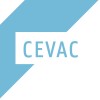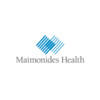
Efficacy of App and Electronic Device in the Treatment of Premature Ejaculation
Premature EjaculationMasturbation1 moreRandomized control trial to determine if we can produce increases in the IELT using a new masturbator electronic in subjects with premature ejaculation in combination with a exercise app, producing improvements in the quality and satisfaction of the sexuality of the patient.

Multi Modal Stimulations in Pre-term Neonates
Preterm BirthInfant2 moreA total of 56 neonates with LBW will recruited by the convenience sampling to participate in this two group pre-test post-test, single blinded randomized clinical study. After the demographics, recruited NLBW will be randomly divided into two groups, group A and group B with block randomization. There will be four blocks, with the matrix design of 4X14 here 14 being rows. Each block contained 4 chits (2 chits for each group), totalling 56. The subjects will be allotted to the group based on the randomly chosen chit by their parents. Once the block will be allotted, next row block was opened. Thus, equal number of NLBW will be assigned to each group over time. Group A will be receiving multimodal sensory and kinesthetic stimulation (MSKS) and Group B will be receiving regular lifesaving hospital care. Group A will receive the interventions for 2 weeks period, totalling 10 sessions. Each session will last for 30 minutes duration.

Platelet Rich Plasma Injection Into Ovary of Patients With Premature Ovarian Insufficiency
Premature Ovarian FailureAll encountered cases with POI will be assessed and examined then investigated. Eligible cases will be included in the study

Prediction Tool for Premature Labour and Neonatal Outcome
Premature BirthA register and prediction model will be developed to predict the outcome of preterm labour and birth.

Prematurity Related Ventilatory Control (PRE-VENT) - Specific Aim 2
Infant,PrematureTo determine if late (at or beyond postnatal day 14) mild permissive hypercapnia is associated with reduction in apnea, bradycardia, and hypoxemic episodes and with improved stability of oxygenation.

LISA vs INSURE in Extremely Low Birth Weight Infants. A Manikin Study
Respiratory Distress SyndromePreterm Birth1 moreThis is an unblinded, randomized, controlled, crossover (AB/BA) trial of surfactant treatment with LISA vs. INSURE in a manikin simulating an extremely low birth weight infant. Participants will be level III NICU consultants and residents. Randomization will be performed using a computer-generated random assignment list. The primary outcome measure will be the total time of device positioning. The secondary outcomes will be the success of the first and the participant's satisfaction.

A New Intervention Method to Enhance Oral Feeding Ability in Premature Infants: A Randomized Controlled...
Feeding; DifficultNewborn1 moreIndonesia is the fifth country with the highest number of premature infants in the world. Research has shown that as many as 40% to 70% of premature infants exhibit both immature and atypical feeding skills and those requiring respiratory support and those experiencing delays in beginning oral feeding are most often affected. Majority of premature infants have poorly developed suck and swallow mechanisms. The neurological immaturity, abnormal muscle tone, depressed oral reflexes, and difficulty in regulating state, can decrease the quality of infant's oral motor skills and the quantity of intake. For these reasons many high-risk infants are unable to tolerate oral feeding from birth and have difficulty making the transition from tube feedings to functional oral feeding. This transition to full oral feeding is an important competency for the infant to attain prior to discharge home. Delays in discharge are often secondary to feeding difficulties, leading to increased medical costs. Currently a number of treatment strategies exist to facilitate oral feeding in premature infants. These include environmental/physical modifications such as eliminating external stimuli during feedings, using therapeutic nipples to manipulate flow rate, positioning and swaddling to support the motor system and improve flexion, and oral motor intervention including Non-nutritive sucking (NNS) stimulation and oral/perioral stimulation. There are known various methods of oral and perioral stimulations. Recent study claimed that oral stimulations combined with non-nutritive sucking stimulation in premature infants for at least 10 days period could facilitate oral feeding ability. The therapy of new method intervention that will be studied in this research was a combination of physiological flexion in therapeutic positioning with specific swaddling techniques, oral stimulation, stimulation of synergistic movements, and stimulation of non-nutritive sucking using a special designed pacifier according to the size of premature infant's oral cavity. The objective of this study is to determine the time span required for premature infant to achieve safe and efficient oral feeding after new method intervention. Therefore, this new method expectedly can be used as an intervention to improve oral feeding ability in premature infant.

Microbiome, Atopic Disease, Prematurity
AtopyPrematurityThere is increasing recognition that the microbiome may be important in the development of allergic disease. Asthma is the most prevalent pediatric chronic disease and affects more than 300 million people worldwide. For unclear reasons, those infants born at 34 weeks and earlier are three times as likely to develop asthma. Factors such as formula feeding, C-section delivery and antibiotic exposure may play a role. Recent evidence has identified a "critical window" in early life where gut and breast milk microbial changes are most influential. The investigators propose a novel study to follow a cohort of premature babies in the NICU and after discharge home. The investigators aim to examine whether various exposures of babies in the NICU impact their milk and gut microbiome and lead to asthma and allergies. Our specific aims are: To assess if there is a specific pattern of gut and/or breast milk microbiome over time that is affected by the type of nutrition a baby receives (donor vs maternal vs formula) or other exposures such as antibiotics. Assess whether there are patterns in the microbiome associated with the development of allergic sensitization patterns. Determine if early patterns of the microbiome and allergic sensitization predict allergic conditions (food allergies, allergic rhinitis, eczema, asthma) by 2 years of age. The investigators will recruit approximately 50 subjects born at 34 weeks of gestation or earlier from two local level III NICU. These subjects will be followed over their NICU course with weekly stool, milk feed, and oral saliva collection as well as documentation of relevant events including prenatal history, delivery history, nutrition and breast feeding history and antibiotic courses. Further samples will be collected after discharge at research visits that will take place Rady Children's Hospital until 4-6 years of age. At these visits, standardized allergy questionnaires and a blood allergy panel will be obtained. Together this data will provide a unique opportunity to identify potential shifts in the microbiome associated with nutrition, asthma and allergy in preterm infants. Ultimately, the investigators may be able to discover ways to prevent the development of asthma and allergies during this early window of opportunity.

MIRACLE of LIFE Study
Preterm LaborPreterm Birth8 moreThe goal of this observational study is to develop and validate cell-free RNA-based biomarkers for predicting a variety of adverse pregnancy outcomes in a pregnant person population. The main question it aims to answer are: Can cell-free RNA-based biomarkers predict which pregnant people are at greatest risk of developing adverse pregnancy outcomes (e.g., preterm birth, preeclampsia)? What is the performance of such biomarkers when predicting an adverse pregnancy outcome (e.g., sensitivity, specificity, PPV, NPV, TPR)?

Trial of Weaning of Nasal Continuous Positive Airway Pressure (CPAP)
Preterm NeonatesTo compare the 2 methods of weaning of nasal CPAP in premature babies born at 32 weeks or less
